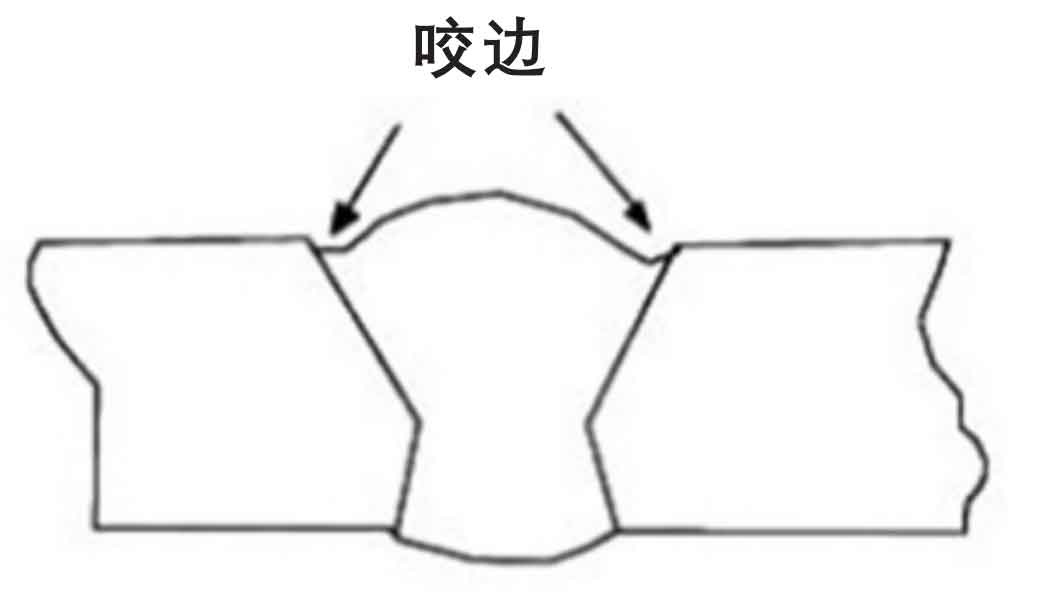Your Full Handbook to Preventing Weld Undercut Like a Pro
Your Full Handbook to Preventing Weld Undercut Like a Pro
Blog Article
Comprehending the Causes and Solutions for Undercut Welding in Metal Construction Processes
In the realm of metal manufacture procedures, the occurrence of undercut welding positions a considerable difficulty that requires a thorough understanding of its causes and practical services. The detailed interaction of various factors during welding procedures can cause this unfavorable sensation, influencing the structural stability and general quality of the bonded joints - Preventing weld undercut. By exploring the root triggers of undercut welding and discovering efficient restorative actions, fabricators can boost the requirement of their workmanship and ensure the manufacturing of remarkable metal elements
Typical Sources Of Undercut Welding
Often overlooked in steel manufacture, undercut welding occurs due to various variables that require meticulous focus and proficiency to be properly mitigated. Furthermore, improper welding methods, such as making use of the wrong welding angle or take a trip rate, can also add to undercut formation. The selection of welding parameters, such as voltage, existing, and wire feed speed, plays a considerable duty in the event of undercut welding.
Influence of Incorrect Welding Parameters
Incorrect welding specifications can considerably compromise the stability and quality of welded joints in metal fabrication procedures. The impact of incorrect welding criteria shows up in numerous methods, causing structural weaknesses and flaws in the welded elements. One important facet affected by improper welding specifications is the infiltration depth of the weld. Inadequate warmth input because of low welding currents or excessively high travel speeds can result in insufficient fusion in between the base metals, causing insufficient joint infiltration and damaged bonds. Alternatively, too much warm input caused by high welding currents or sluggish traveling speeds can result in burn-through and too much support, developing a weak and unsteady weld framework. In addition, inaccurate specifications such as incorrect voltage setups or incorrect electrode angles can add to erratic weld bead profiles, lack of fusion, and increased possibilities of defects like damaging. Precise attention to welding specifications is vital to ensure the manufacturing of high-grade welds with the desired mechanical residential properties and structural stability.
Effect of Improper Torch Angle
Incorrect lantern angle in welding procedures can dramatically affect the top quality and stability of the last weld joints in steel manufacture processes. The lantern angle plays a critical function in determining the warmth input and distribution during welding. When the torch angle is inaccurate, concerns such as damaging can develop. Undercutting is a typical welding flaw where a groove develops along the weld toe, damaging the joint and endangering its architectural stability.
A lantern angle that is also steep can cause not enough penetration, incomplete combination, and increased spatter. On the various other hand, a torch angle that is too superficial can cause extreme penetration, burn-through, and distortion of the base material. Preventing weld undercut. Proper lantern angle is necessary for making certain consistent weld top quality, stamina, and look
To protect against damaging and other defects brought on by inappropriate lantern angles, welders need to be trained to maintain the appropriate lantern angle throughout the welding process. Routine monitoring and change of torch angles during welding can assist achieve sound welds with minimal issues.
Role of Inadequate Welding Techniques

An additional element of inadequate welding methods is improper weld prep work. Insufficient cleansing of the base metals, wrong joint design, or not enough edge prep work can all contribute to undercut welding. Additionally, poor shielding gas insurance coverage or utilizing the incorrect kind of gas can cause incomplete combination and the formation of undercut issues.
To address the function of inadequate welding techniques in metal manufacture processes, it is vital to provide comprehensive training for welders. Appropriate education and learning on welding parameters, joint preparation, and protecting gas selection can help stop undercut welding and guarantee high-grade welds in metal manufacture projects.
Effective Solutions for Undercut Welding
Dealing with undercut welding in metal fabrication calls for applying reliable solutions to boost weld quality and structural stability. One of the primary remedies to combat undercut is to readjust welding specifications such as voltage, current, and travel rate to guarantee proper warm input and blend. By fine-tuning these setups, welders can prevent extreme melting of the base steel and filler material, decreasing the likelihood of undercut formation.
Furthermore, appropriate joint prep work is vital in preventing undercut. Making certain clean base metal surfaces without pollutants and making use of the appropriate bevel angle can assist advertise far better weld infiltration and reduce the risk of undercut - Preventing weld useful source undercut. Using appropriate welding methods, such as oscillating the lantern or weaving, can likewise aid in dispersing heat evenly and filling the weld joint properly, minimizing the possibility of undercut defects
Additionally, selecting the appropriate welding consumables, including electrodes and filler steels, is vital in mitigating undercut. Using materials with proper chemical compositions and mechanical residential properties can contribute to attaining audio welds with marginal undercut. Routine examination and quality assurance actions ought to also be implemented to discover and address undercut concerns quickly, making certain the general integrity of made steel elements.

Conclusion
To conclude, comprehending the causes and remedies for undercut welding in steel construction procedures is essential for achieving high-grade welds. By addressing usual causes such as incorrect welding criteria, inappropriate lantern angle, and inadequate welding strategies, welders can protect against damaging and ensure strong, long lasting welds. It is essential to focus on these aspects and implement effective services to boost the overall welding procedure and final product high quality.

Report this page